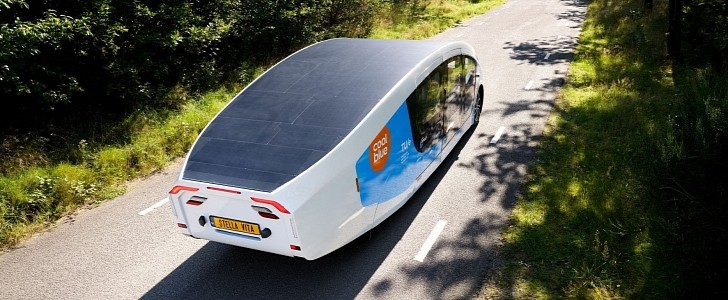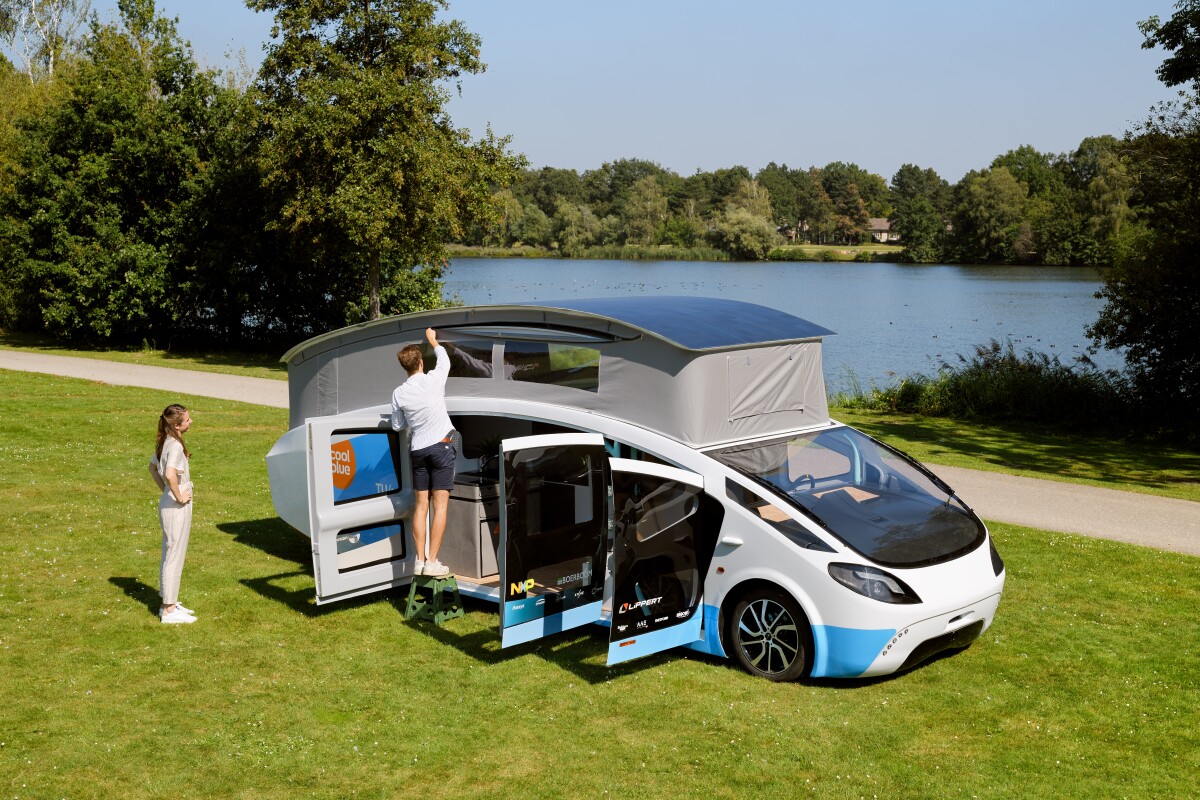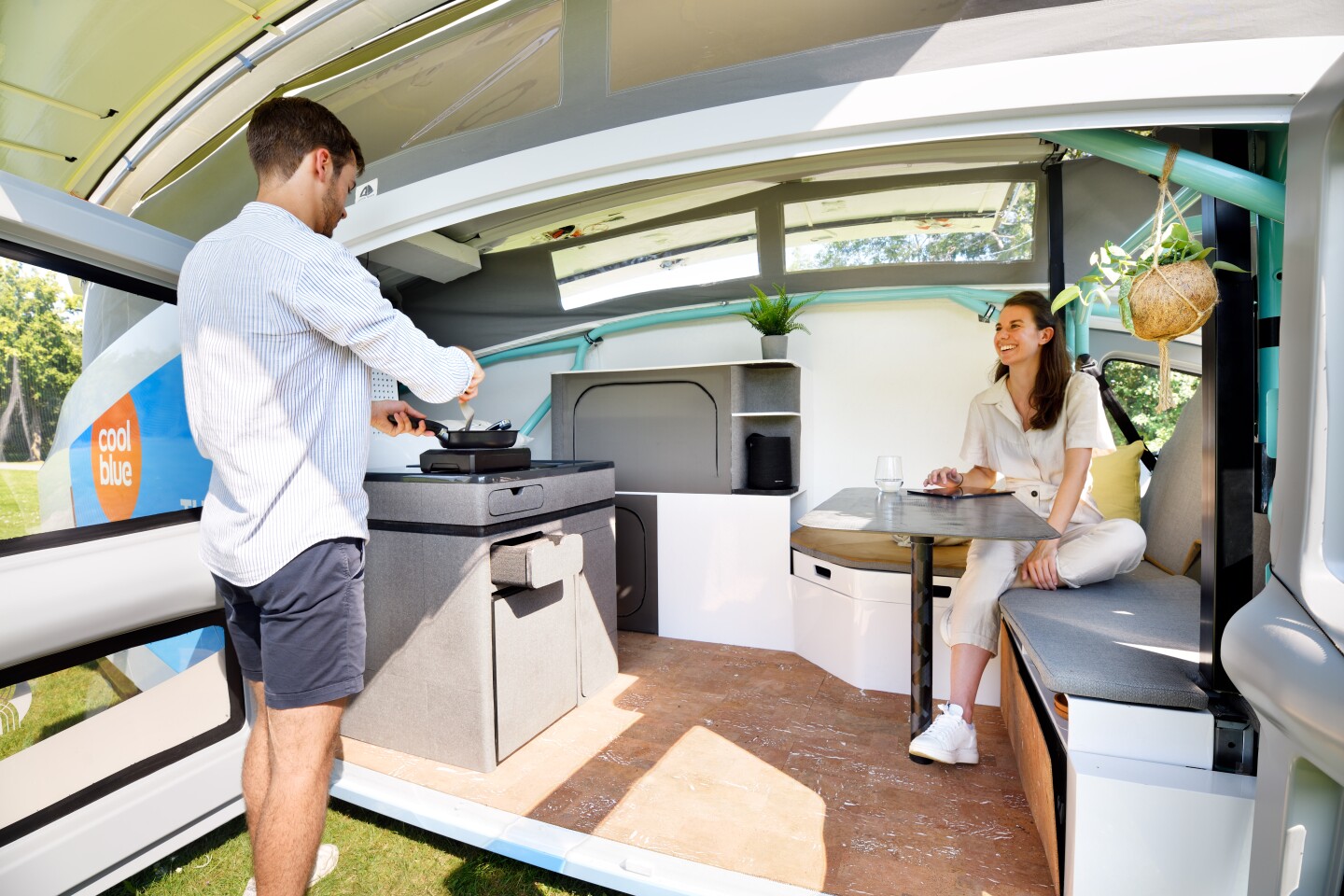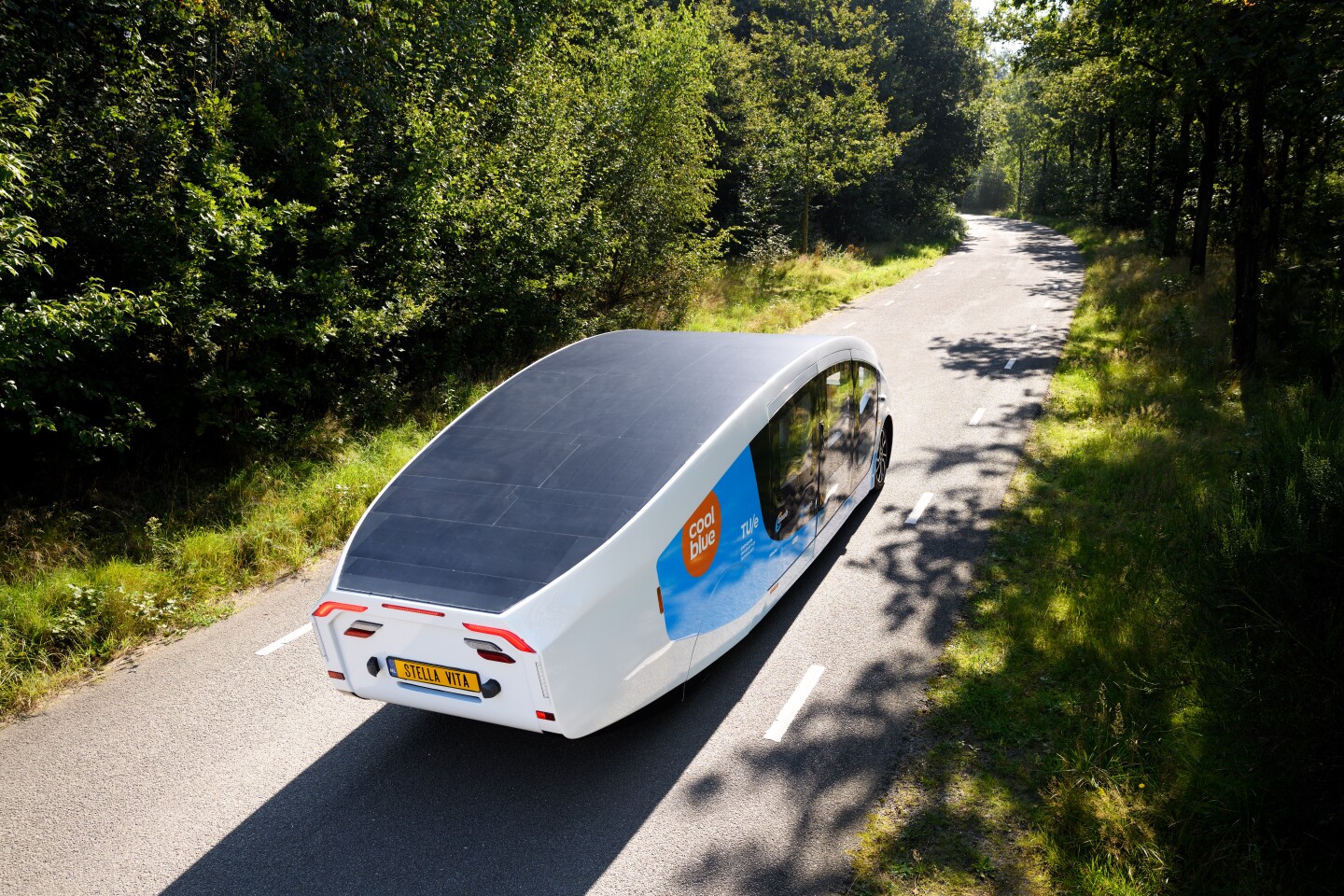World's First Solar Powered Mobile Home to Go on 1,800 Mile Journey
Solar Team Eindhoven, a Dutch student team known for its solar-powered vehicles, has unveiled the world's first solar-powered mobile home. Its makers have called it Stella Vita, and they say it can generate enough solar electricity to drive 730 kilometers (454 miles) in a day, along with also being a house on wheels.





The Dutch students behind the project will undertake a month-long journey through Europe starting September 19, 2021. Stella Vita will be driven on solar energy alone from Eindhoven in The Netherlands, all the way to the southernmost tip of Spain.
This solar house on wheels features a shower, a kitchen, a sleeping space, and a cockpit. Its roof has several solar panels, which can be expanded when the vehicle Is parked, revealing a 17.5-square-meter (188 sq ft.) area. The latter is double when compared to the surface of the roof in the driving mode.
The student team claims that efficient energy use allows Stella Vita to travel up to 730 kilometers on a sunny day. Since the entire trip is 3,000 kilometers (ca. 1,864 miles) long, the student team does not plan to drive that much on a day-to-day basis.
The vehicle does not need any external charging points or fuel, and its solar panels can also power everything else found on-board, displaying a sustainable future for recreational vehicles and mobile homes. It is worth noting that everything about the Stella Vita has been designed to be as light and efficient as possible.
The members of Solar Team Eindhoven have previously presented other solar-powered vehicles, and all of them were dubbed Stella, which means Star in Latin. Many years ago, they presented the Stella Vie, which was the world's first road-legal five-seater solar car.
Its successor was called Stella Lux, which made more power than it consumed. While Subaru also had an electric vehicle called Stella since 2009, there is no link between the Dutch model and the Japanese key car.
This solar house on wheels features a shower, a kitchen, a sleeping space, and a cockpit. Its roof has several solar panels, which can be expanded when the vehicle Is parked, revealing a 17.5-square-meter (188 sq ft.) area. The latter is double when compared to the surface of the roof in the driving mode.
The student team claims that efficient energy use allows Stella Vita to travel up to 730 kilometers on a sunny day. Since the entire trip is 3,000 kilometers (ca. 1,864 miles) long, the student team does not plan to drive that much on a day-to-day basis.
The vehicle does not need any external charging points or fuel, and its solar panels can also power everything else found on-board, displaying a sustainable future for recreational vehicles and mobile homes. It is worth noting that everything about the Stella Vita has been designed to be as light and efficient as possible.
The members of Solar Team Eindhoven have previously presented other solar-powered vehicles, and all of them were dubbed Stella, which means Star in Latin. Many years ago, they presented the Stella Vie, which was the world's first road-legal five-seater solar car.
Its successor was called Stella Lux, which made more power than it consumed. While Subaru also had an electric vehicle called Stella since 2009, there is no link between the Dutch model and the Japanese key car.
Students to embark on 3,000-km road
trip in "solar house on wheels"
By Paul Ridden
September 10, 2021

Stella Vita's PV-packed roof can be raised at camp to give its two occupants room to stand upright inside
STE/Bart van Overbeeke
VIEW 10 IMAGES
The Solar Team from TU Eindhoven has built a number of super-efficient, solar-powered vehicles over the years to compete in World Solar Challenges, and has now raised the roof on its latest design. The Stella Vita camper will hit the road later this month for a 3,000-kilometer trip through Europe.
The curvy concept built by the 22-strong student team is described as a kind of solar house on wheels, and has an 8.8 m2 (94 ft2) solar array on its roof that harvests energy for the 60-kWh Li-ion battery bank while it rolls along at up to 120 km/h (74.5 mph), but slide-out panels can fold out for a total canopy area of 17.5 m2 (188 ft2) when parked at camp.

The solar array can double in size at camp thanks to additional fold-out panels
STE/Bart van Overbeeke
Not only that, the vehicle has a pop-up roof so the driver and passenger can comfortably stand and move around inside, cook in the kitchen, or take a shower - with all of the Stella Vita's power needs, including the electric drive system, expected to be met by the solar system alone, so there shouldn't be a need to rely on charging infrastructure along the travel route.
In the cabin, the driver can keep watch over energy stats via the center display, and there's room in the center console for a portable Bluetooth speaker. In addition to driver and passenger doors, the vehicle has two large opposing doors behind the cabin that open the interior to light and air, while those folded-out panels can also provide a little shade when campers are seated outside.

The cosy interior includes a kitchen block, bench seating and a dining table
STE/Bart van Overbeeke
As well as a compact kitchen block, the interior of the Stella Vita hosts L-shaped bench seating with integrated storage, a small dining table, shelving and cabinetry and a sleeping area. There's mention of a TV and coffee-making facilities too, but nothing about a built-in toilet.

The student team will embark on a 3,000-km road trip from Eindhoven to southern Spain on September 19
STE/Bart van Overbeeke
In bright sunlight, Solar Team Eindhoven says that the vehicle could travel up to 730 km (453.6 miles) in a day, and that the range on a fully charged battery could see as much as 600 km (372.8 miles) of motoring by night.
To prove the concept's capabilities, team members are due to embark on a European Solar Tour. Setting off from Eindhoven in the Netherlands on September 19, the epic adventurers will head south through Zolder toward Brussels, where a stopover is planned. More stops are planned for Paris, Le Mans, Île de Ré, Bordeaux, Biarritz, Zaragoza, Madrid, Toledo, and Córdoba, with the 3,000-km (1,864-mile) journey coming to an end in the southern-most city in Spain, Tarifa, on October 15.
Readers can follow the adventures on the project website.
Source: TU Eindhoven
No comments:
Post a Comment